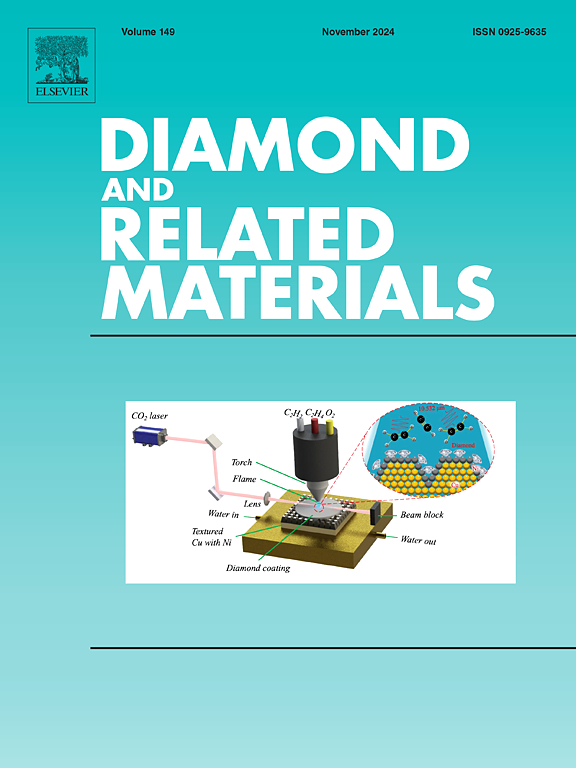Green manufacturing of rGO-reinforced Cu-based MMCs with optimized properties through microwave hybrid heating process
IF 5.1
3区 材料科学
Q2 MATERIALS SCIENCE, COATINGS & FILMS
引用次数: 0
Abstract
This research work used a unique microwave hybrid heating (MHH) approach to Cu-based rGO metal matrix compsoites (MMC) composites. A 2.45 GHz domestic microwave, with a maximum power level of 900 W, was utilized to melt copper powder reinforced with different proportions of reduced graphene oxide (rGO) ranging from 0.5 % to 1.5 % by weight fraction. Following this, the thermal, mechanical, and metallurgical characteristics of the composite samples were examined. The average size of the raw powder particles utilized for the casting process was approximately 30 μm for copper powder and 69.8 nm for reduced graphene oxide (rGO) powder. The processing time of Cu-based rGO decreases with an increase in reinforcement material. On the developed composite casts, a variety of characterization methods were used, including Vickers' microhardness testing, porosity, density, electrical and thermal conductivity, X-ray diffraction (XRD), and scanning electron microscopy (SEM). When compared to pure Cu, the test results showed a significant increase in hardness and thermal conductivity. In rGO-based samples, the microstructural analysis showed a uniform reinforcement distribution with finely recrystallized grains that resembled polycrystalline structures and a hexagonal solidification pattern with pure Cu. The porosity decreased from 1.09 % in pure copper to 0.79 % with the addition of 1.5 % rGO, though relative density dropped due to rGO's lower density. Thermal conductivity increased to 450 W/m.K, about 2.34 times higher than pure Cu. Vickers microhardness improved to 145.75 HV, a 2.35 times increase over pure Cu (61.7 HV).

微波混合加热工艺制备性能优化的氧化石墨烯增强cu基复合材料
本研究采用了一种独特的微波混合加热(MHH)方法来制备cu基还原氧化石墨烯金属基复合材料(MMC)。利用最大功率900 W的2.45 GHz家用微波,对含有0.5 ~ 1.5%的还原氧化石墨烯(rGO)增强铜粉进行了熔融实验。随后,测试了复合材料样品的热、力学和冶金特性。用于铸造工艺的原料粉末颗粒的平均尺寸为铜粉约30 μm,还原氧化石墨烯(rGO)粉末约69.8 nm。cu基还原氧化石墨烯的加工时间随着增强材料的增加而缩短。对所开发的复合铸件进行了多种表征方法,包括维氏显微硬度测试、孔隙率、密度、电导率和导热系数、x射线衍射(XRD)和扫描电子显微镜(SEM)。与纯Cu相比,测试结果显示硬度和导热系数显著提高。在rgo基样品中,显微组织分析显示强化分布均匀,晶粒细再结晶,类似于多晶结构,并且具有纯Cu的六角形凝固模式。当添加1.5%还原氧化石墨烯时,孔隙率从纯铜的1.09%下降到0.79%,但由于还原氧化石墨烯的密度较低,导致相对密度下降。导热系数提高到450 W/m。K,约为纯Cu的2.34倍。显微维氏硬度达到145.75 HV,是纯Cu (61.7 HV)的2.35倍。
本文章由计算机程序翻译,如有差异,请以英文原文为准。
求助全文
约1分钟内获得全文
求助全文
来源期刊

Diamond and Related Materials
工程技术-材料科学:综合
CiteScore
6.00
自引率
14.60%
发文量
702
审稿时长
2.1 months
期刊介绍:
DRM is a leading international journal that publishes new fundamental and applied research on all forms of diamond, the integration of diamond with other advanced materials and development of technologies exploiting diamond. The synthesis, characterization and processing of single crystal diamond, polycrystalline films, nanodiamond powders and heterostructures with other advanced materials are encouraged topics for technical and review articles. In addition to diamond, the journal publishes manuscripts on the synthesis, characterization and application of other related materials including diamond-like carbons, carbon nanotubes, graphene, and boron and carbon nitrides. Articles are sought on the chemical functionalization of diamond and related materials as well as their use in electrochemistry, energy storage and conversion, chemical and biological sensing, imaging, thermal management, photonic and quantum applications, electron emission and electronic devices.
The International Conference on Diamond and Carbon Materials has evolved into the largest and most well attended forum in the field of diamond, providing a forum to showcase the latest results in the science and technology of diamond and other carbon materials such as carbon nanotubes, graphene, and diamond-like carbon. Run annually in association with Diamond and Related Materials the conference provides junior and established researchers the opportunity to exchange the latest results ranging from fundamental physical and chemical concepts to applied research focusing on the next generation carbon-based devices.
 求助内容:
求助内容: 应助结果提醒方式:
应助结果提醒方式:


